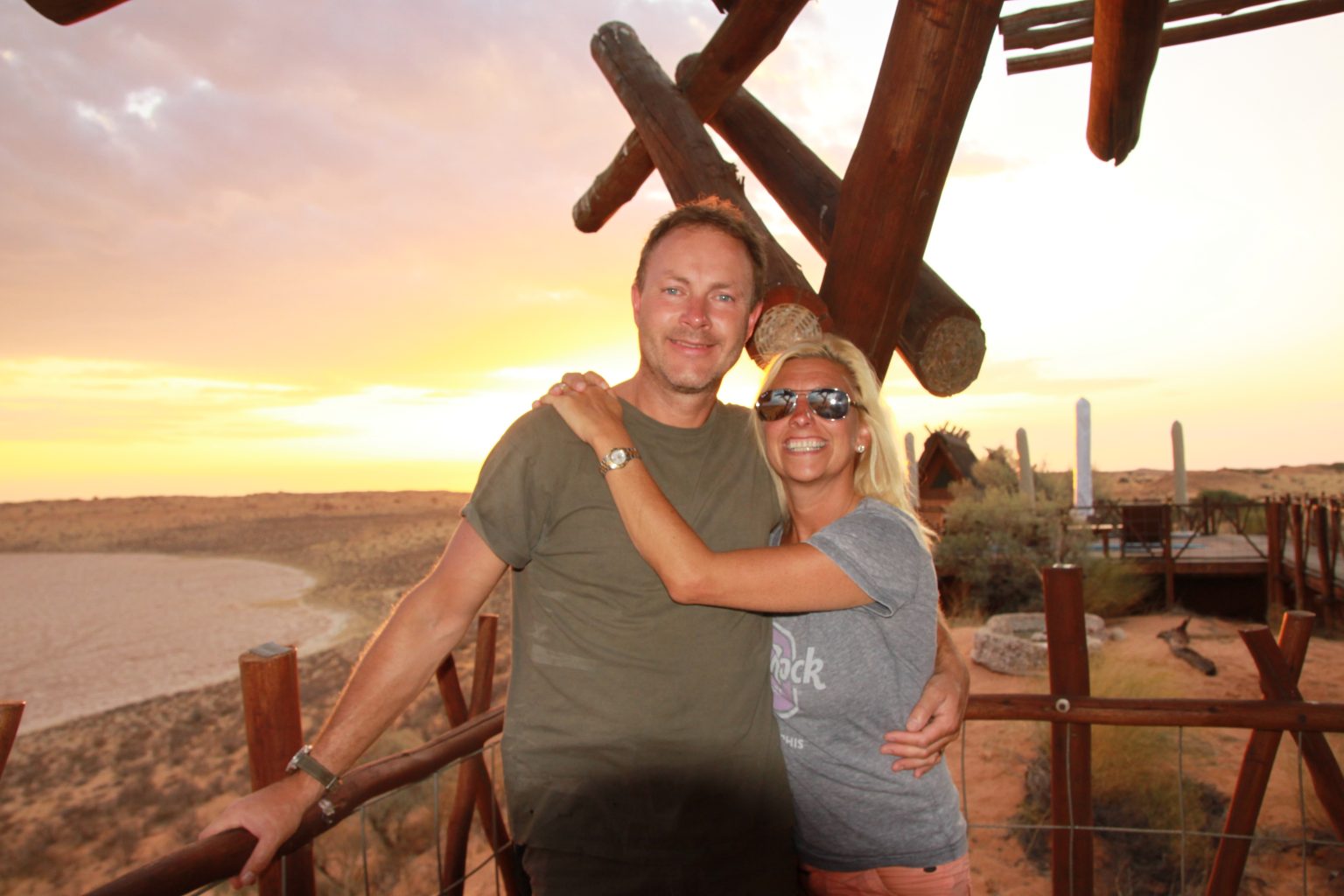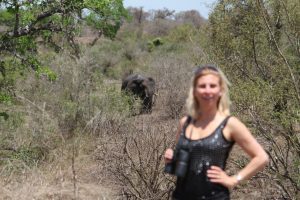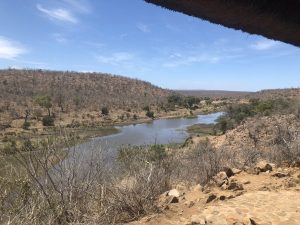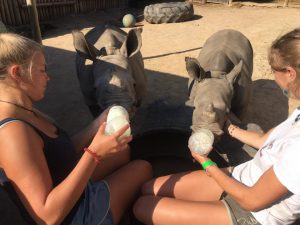🙂 Remote and peaceful
🙁 Quite quiet on wildlife front (but made up by pure peace and quiet in this remote piece of paradise – that is the whole point)
We met the representatives from !Xaus at Kamqua Picnic Spot.

…and followed them on the 50Km road to !Xaus over 91 Dunes! Exciting drive!
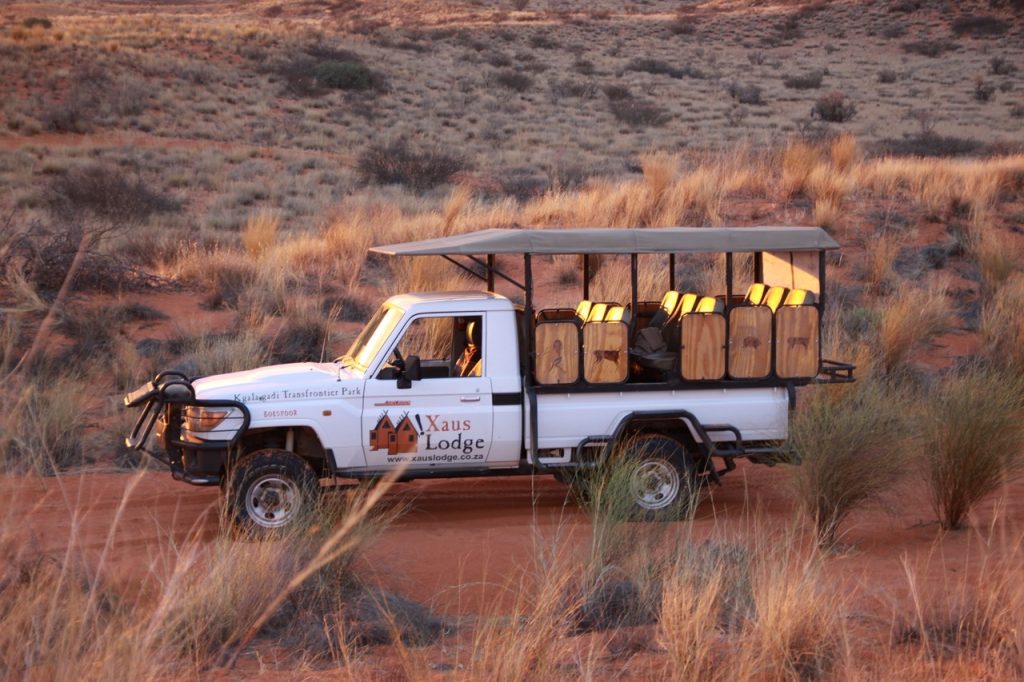
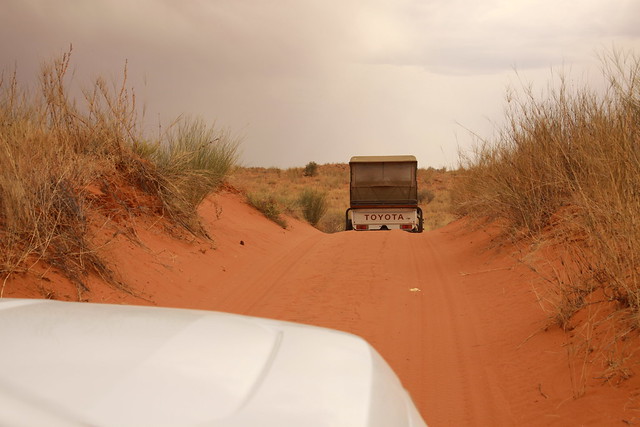
We were given an excellent introductory welcome with cool complimentary drinks which were very welcome.

The lodge is the result of what is usually referred to as a landslide land claim by a group of the local Khomani bushmen and Mier Khoi (a very simplified definition for Khoi: bushmen who turned pastoralists before the arrival of black Bantu tribes) communities. They had lived in these lands before the national park was proclaimed in the 1931; the South African apartheid government finally expelled them from the land of their ancestors in 1974; a bit later the bushmen were formally declared “extinct”, since they were supposed to be too westernised to co-exist with wildlife – game was more precious to the government than their fellow humans. Forced to live in shanty conditions on the edge of their own land too small to hunt, the Khomani clan of the Bushmen initiated a fight to regain control of their ancestral lands. On 21st March 1999, at a ceremony in the Kalahari Desert, 300 of the world’s remaining Bushmen were granted 125,000 acres of land by the new South African government. A documentation about this claim titled “Regopstaan’s Dream” is available on Youtube.

The communities now own land outside of the park where they are allowed to farm or hunt and gather if they want, and land in the park; the land in the park is on the concession that they can’t live there permanently, and can only hunt in a designated area, and only rarely. The lodge was built around 2005, but stood empty for almost two years – several local investors didn’t want to have anything to do with bushmen, an old prejudice. It opened under the current management in December 2007. The lodge’s proceeds are split amongst the three stakeholders: the Mier, the Khomani and SANParks. It is up to each community how to distribute the money. Part of it goes into a school in Upington where children with a bushmen heritage learn the language of their ancestors.
We then lay by the pool until we were called for sundowners.
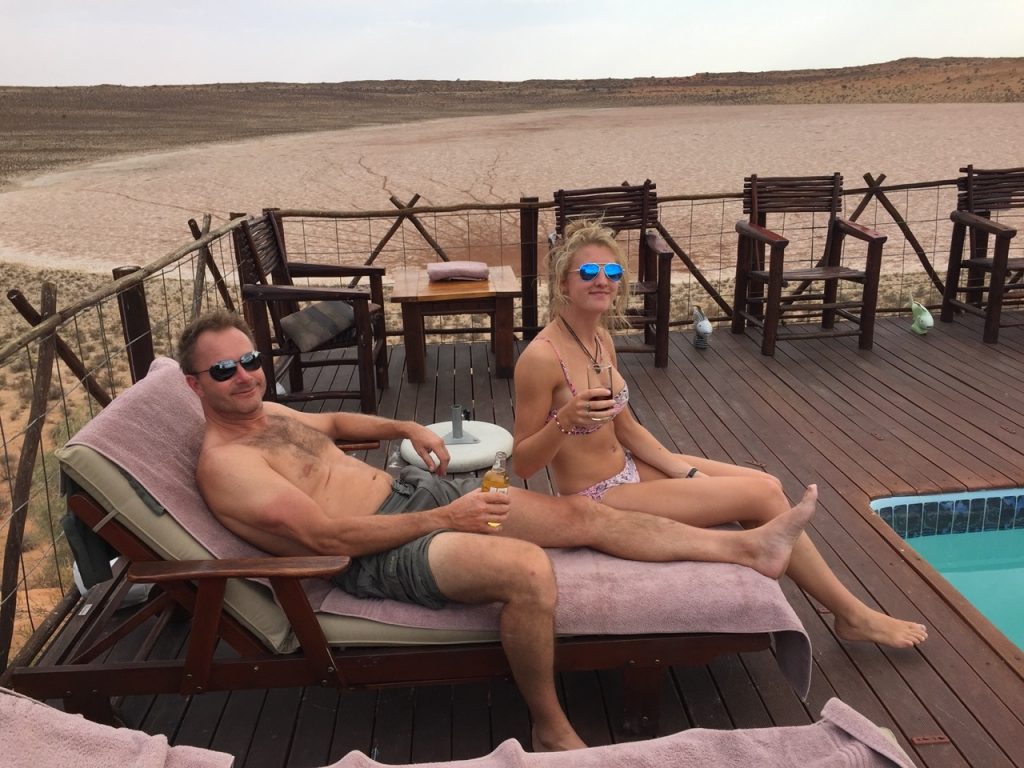
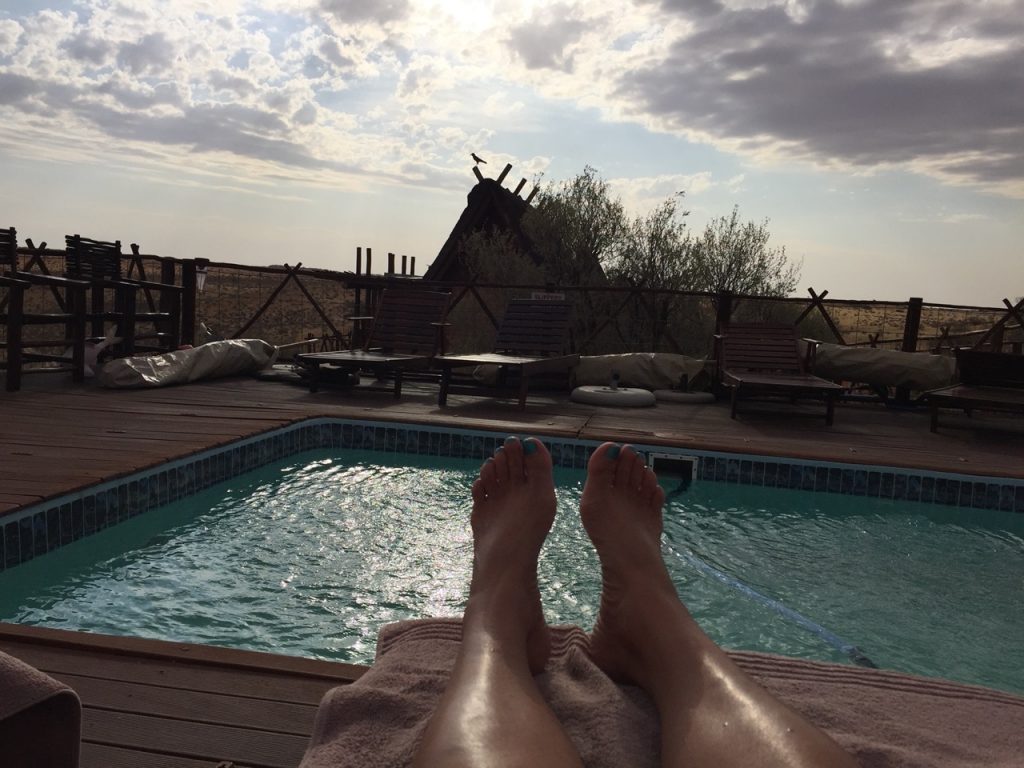
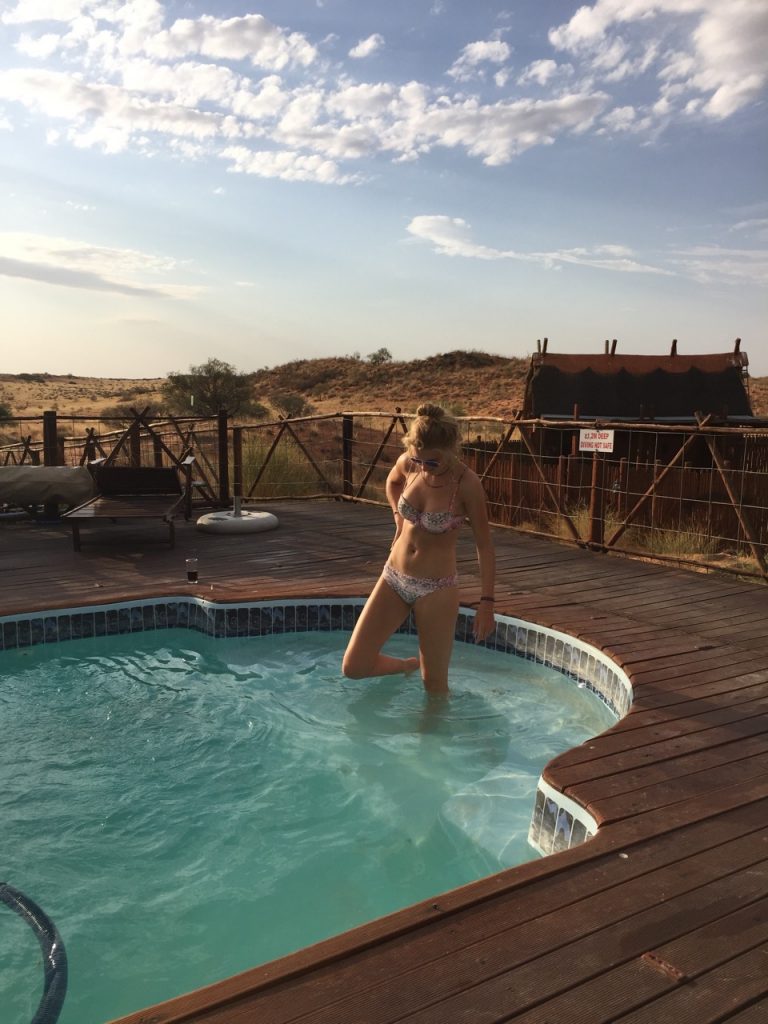
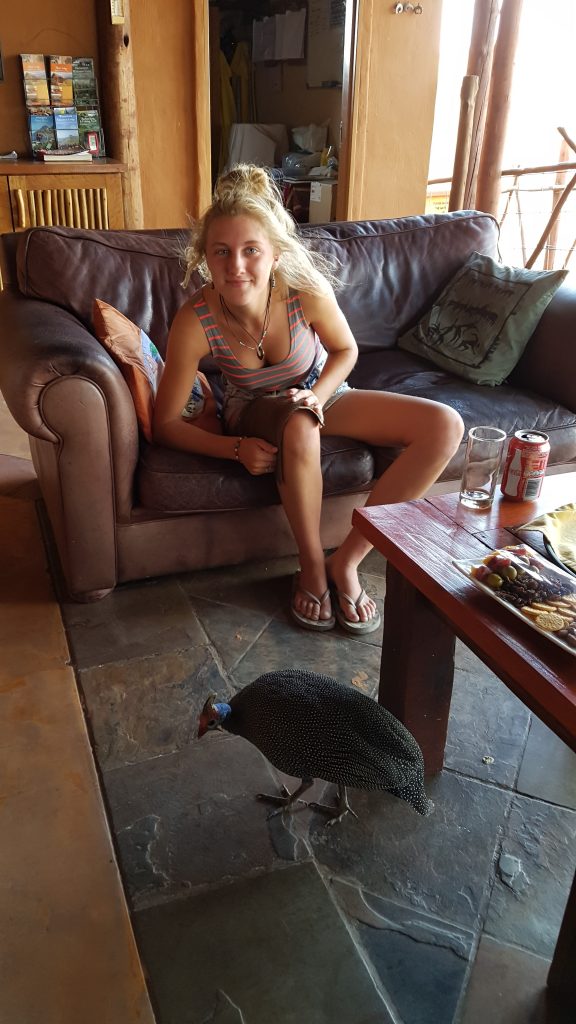
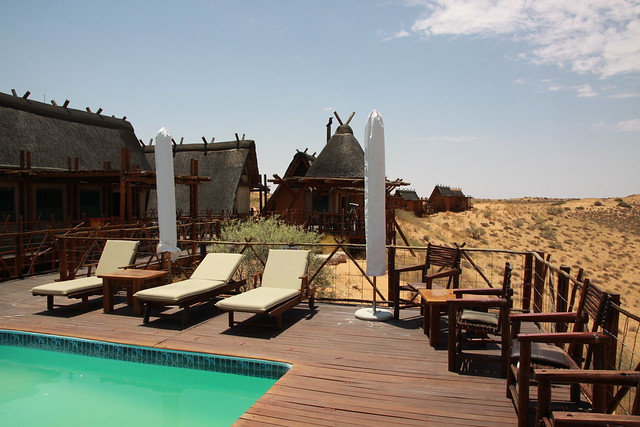
The beauty of !Xaus is the abolute remote and sensational setting. Truly a place to recharge your batteries. The pan creates a stunning central vista:


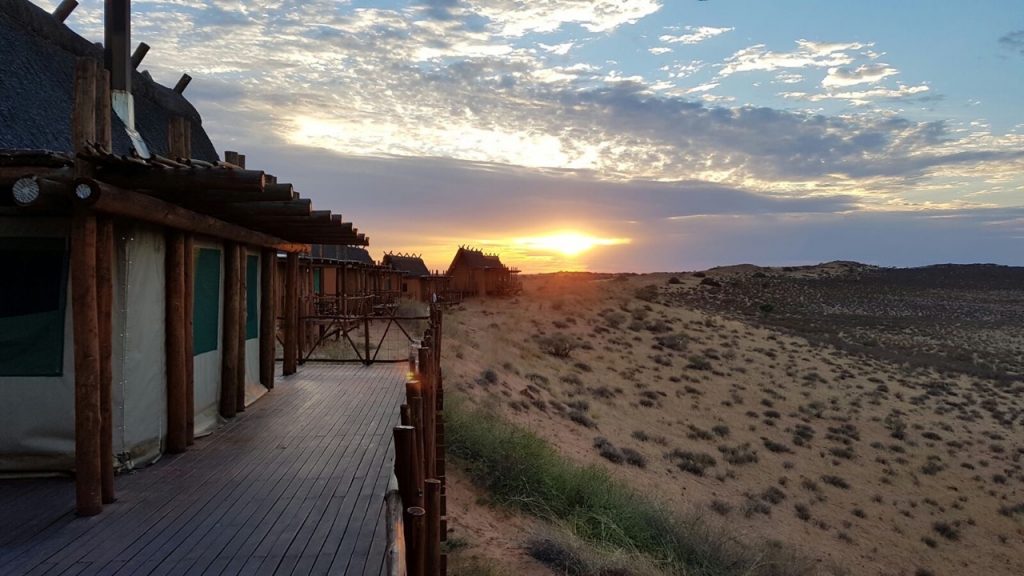
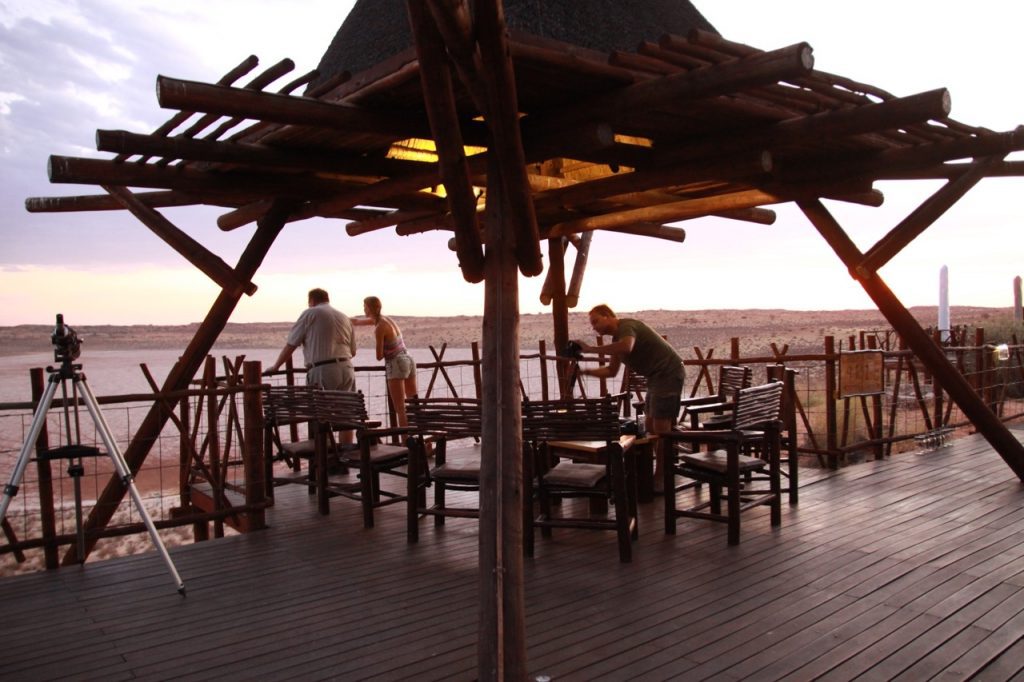
Sunset was spectacular:
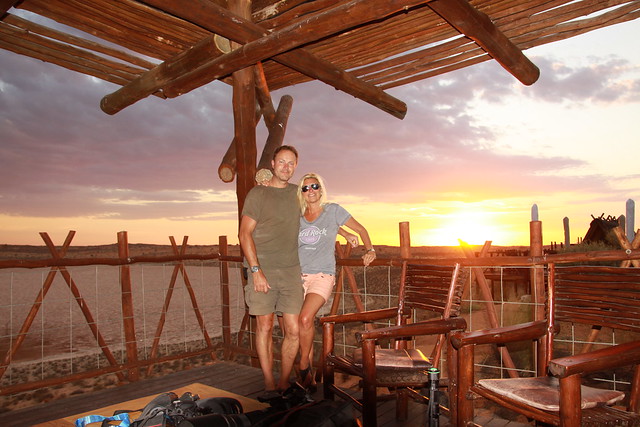
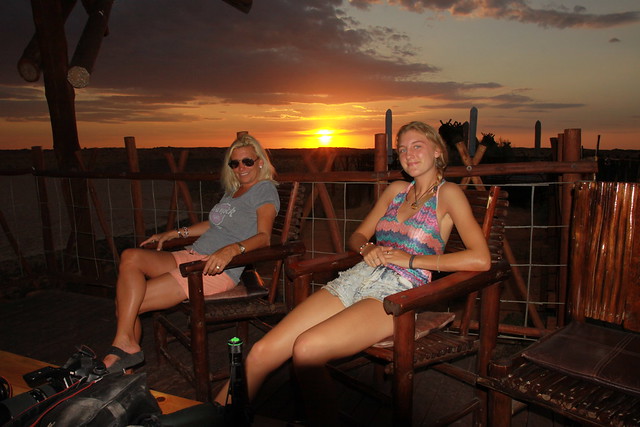
View from our room!
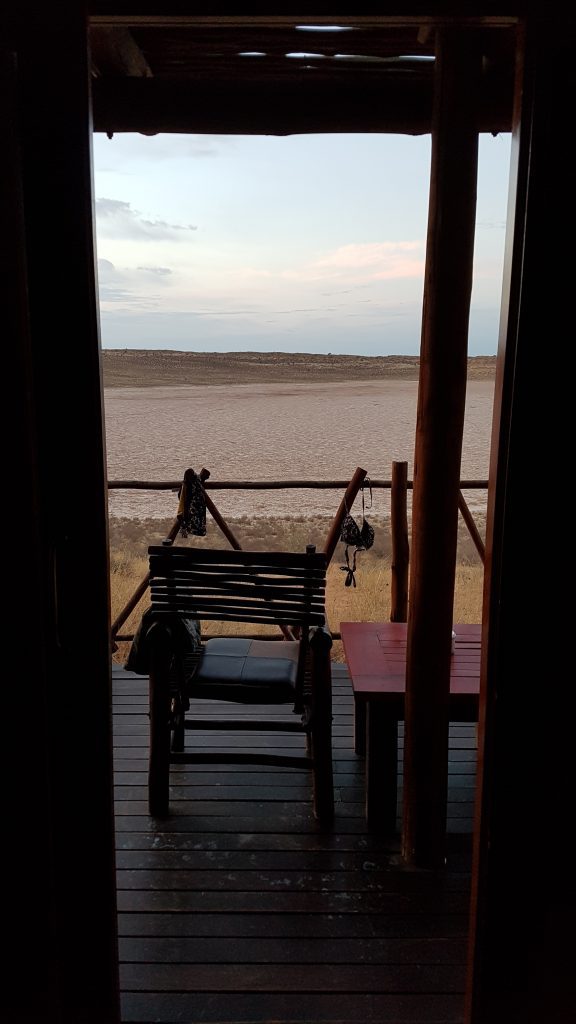
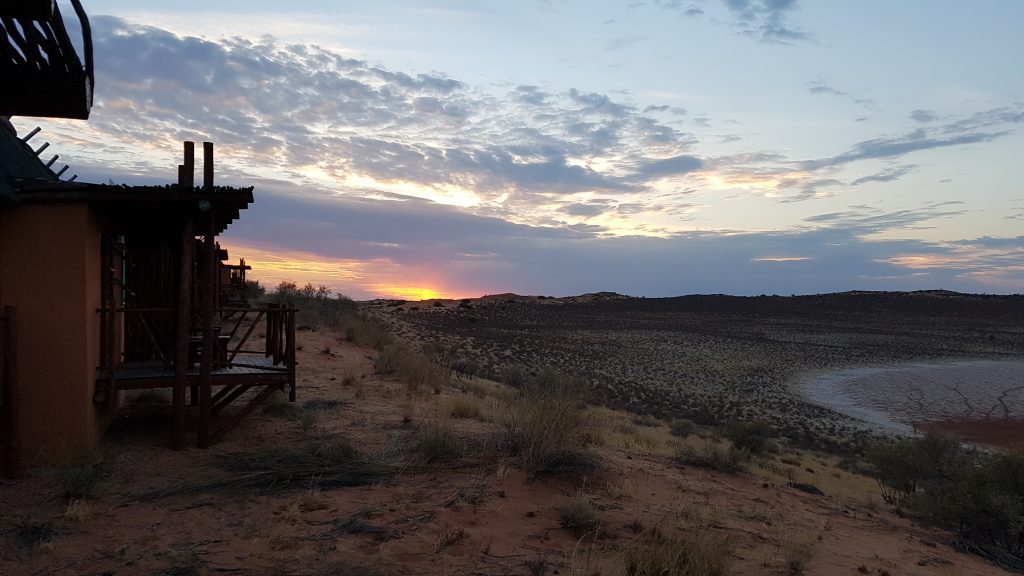
We then headed to the central dining area for an excellent meal followed by a night drive where we spotted several kori bustards and a hyena. After the night drive we were so exhausted that we were fast asleep by the time our heads hit the pillows in our comfortable family accommodation overlooking the pan! Another day in paradise!
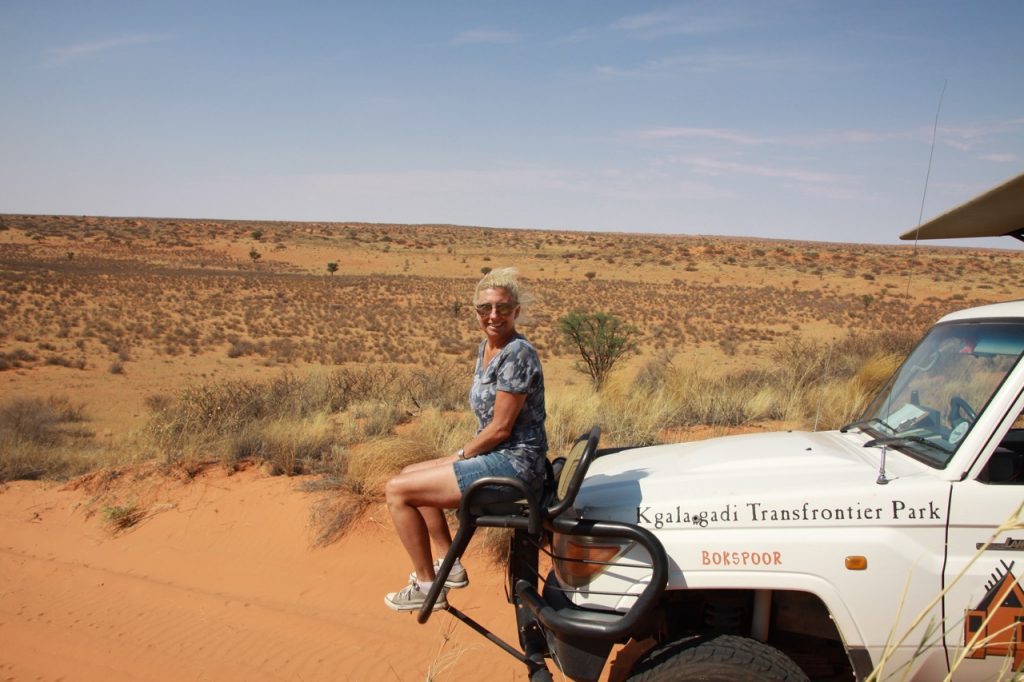
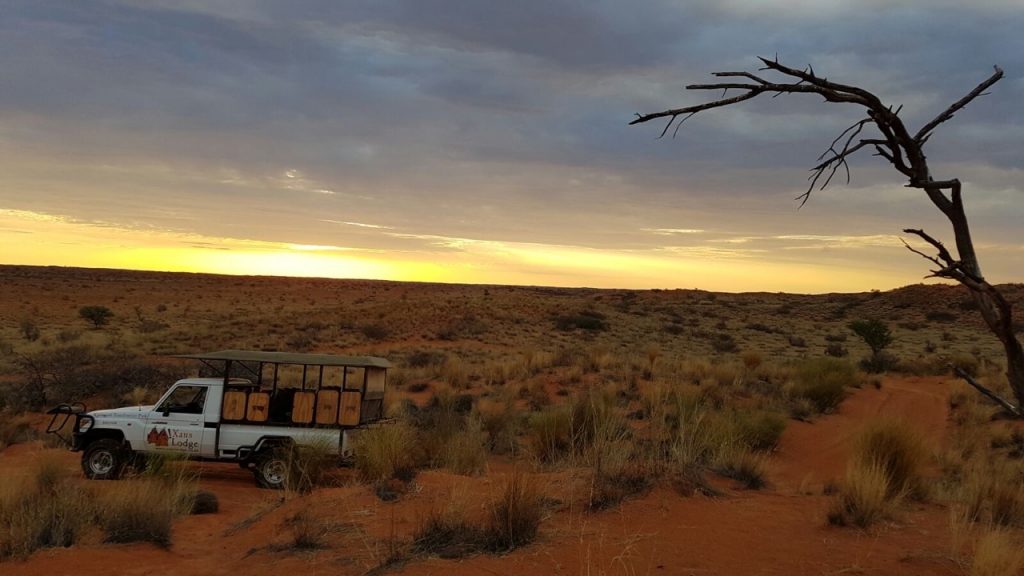

My favourite! “Bokspoor spider” nest: The nest has the form and size of steenbok spoor. The spider is located in the middle of two lobes formed by silk mats covered with sand… so called as it resembles buck spoor. On the surface, two or four sticky-edged, silk web sheets consisting of cribellate silk mixed with sand, form thick mats with slits around their peripheries.The mats cover shallow and symmetrically placed depressions that are linked to the simple and vertical, silk-lined burrow. Repeated opening of the silky flaps create an impression in the sand which can be likened to a cleft hoof imprint. Sticky silk threads along the margins of the silk mats entangle small arthropods that venture too close.
The armoured ground cricket – flightless and mandibles are very powerful; they can inflict a painful nip and they permit the insect to feed on material such as tough herbage or carrion.

Sociable spider’s nest – At first glance, colonies of thousands of social spiders all look the same and are busy with the same tasks. Not so, a particular spider’s body size and condition indicate which task it generally performs within a colony. Spiders with smaller bodies are more likely to help with web building and maintenance. Those who are in better condition tend not to capture prey, while those with lower body condition are more likely to be busy with foraging.

Seed of the camelthorn tree: Acacia erioloba is considered a keystone species, with many other species and ecosystem parameters dependent on it (eg. sociable weavers build there nests in branches). At the same time, this tree provides valuable resources to people: dark, hard, insect-resistant wood for lumber, also considered excellent for fuel and cooking purposes; abundant, nutritious pods sometimes used to make a hot coffee-like drink or porridge (John and Michelle remember their Grannies making this for them as youngsters), and is highly nutritional. It is a hardy species, frost and drought resistant. The bark, leaves, pods, and roots tree have a number of uses. The gum can be used to treat influenza or gonorrhea; and the dry, powdered pods can be used to treat ear infections. The bark has been used to remedy diarrhea, and when pulverized and burnt, it can be used to treat headaches. The root can be used to treat toothache and cough, or boiled to make a mouth rinse for tuberculosis (planzafrica.com). . The tap root can grow up to 60 m, allowing this tree to access deep ground water sources. Studies suggest that trees may live 250-300 years. Gemsbok, elands and kudus are agents of seed dispersal as they eat large numbers of pods, passing the seeds with their tough seed coats through their gut intact and then providing excellent germination conditions in the dung they expel with the seed.
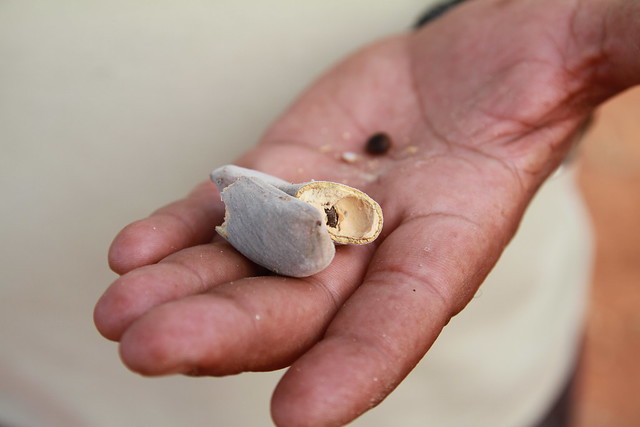
This mongoose was keeping a watchful eye for predators.
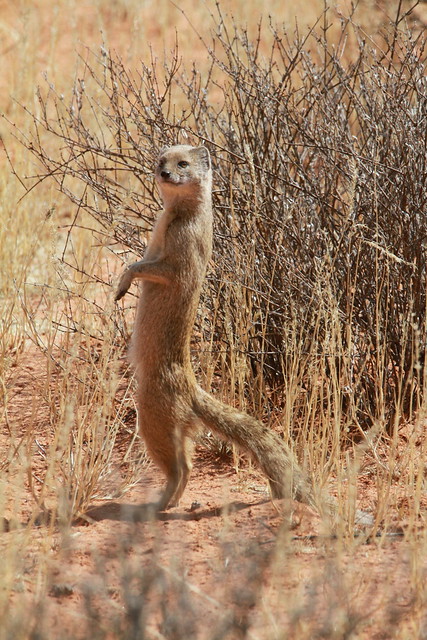
The fruit of tsammas, Citrullus lanatus, are an important source of moisture and are loved by gemsbok.

Damaraland mole rat burrow: are the only mammals in the world known to exhibit eusocial behaviour like ants and bees apart from naked mole rats. They live in subterranean colonies in East Africa where there is a queen and only two or three males responsible for reproduction. Like in an ant colony, the rest of the mole rats have specific roles to play to keep the group alive – from digging tunnels and finding food, to fending off predators like snakes. There can be up to 300 naked mole rats per colony, and the tunnels can stretch to 4km and be as large as six football fields. Mole rats are remarkably ordered. They have burrows within colonies that are dedicated to nesting, eating and even farming – while digging tunnels they look for roots and pull them into burrows. If they find a large tuber, they eat it slowly, covering it up again so it continues to live. Back to hygiene – they also have a toilet burrow which every naked mole rat uses. Once it’s full, they close it off and dig a new one.This photo reflects them clearing out a toliet.
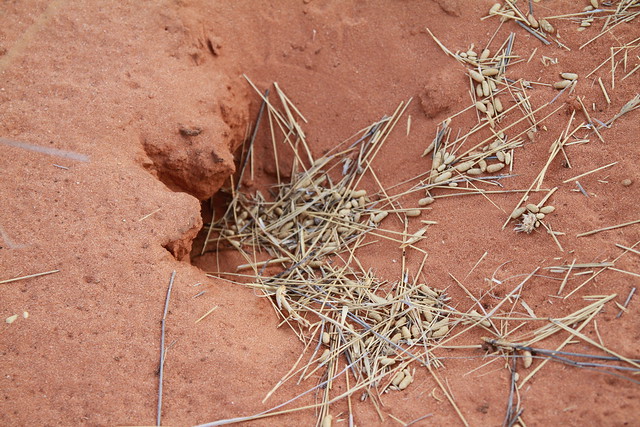
Duinriet or dune reed bushman grass (Stipagrostis amabilis): an endemic hard tufted grass typically growing on the crest of dunes. Fixes the dunes due to long roots. Can be used to thatch roofs.
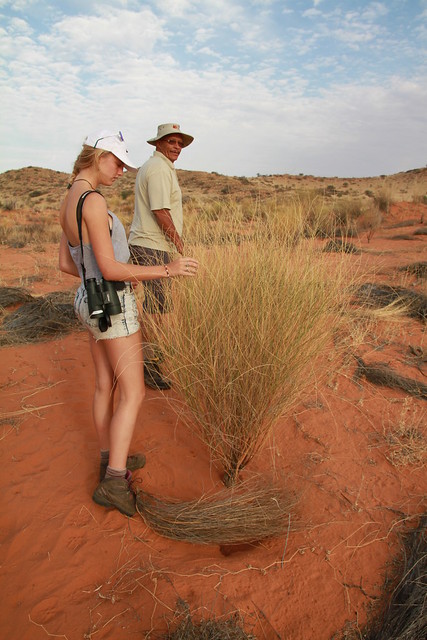
Drie Doring (Three Thorn, Rhigozum trichotomum): used by the bushmen against stomach problems (chew leaves and spit them out) and to make arrow shafts.
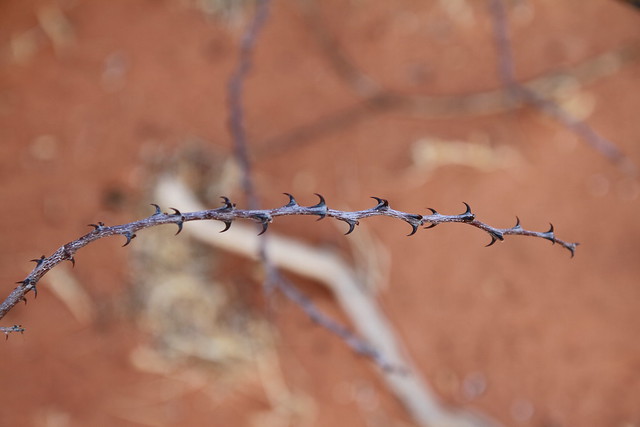
Trail of a skink…
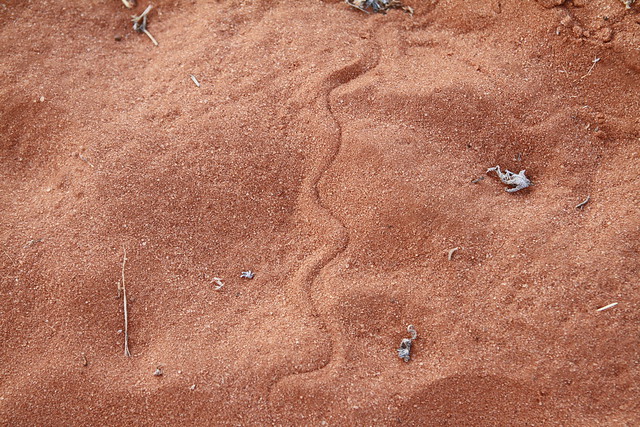
Jackal poo:
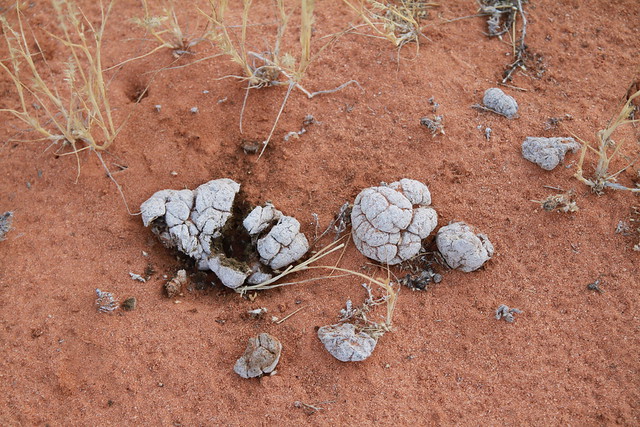
A gemsbok midden:
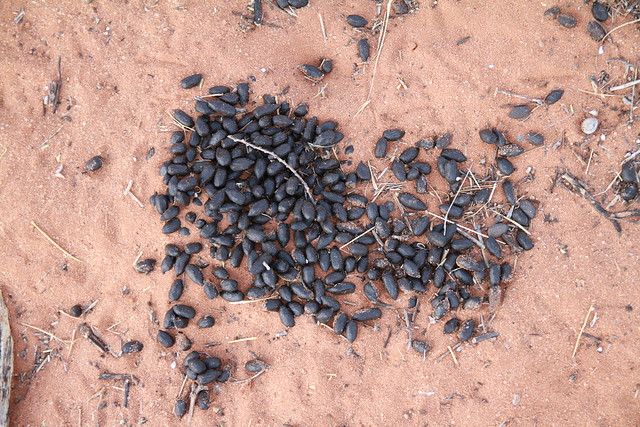
Stunning view along the perimeter of Kgalagadi at sunrise:

The ever present kori bustard
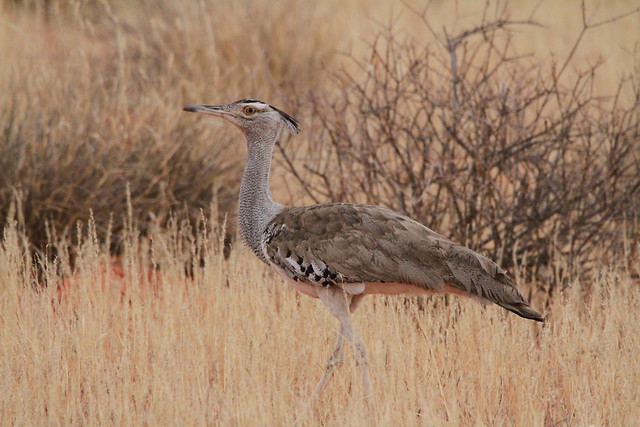
It promised to be another stunning day!
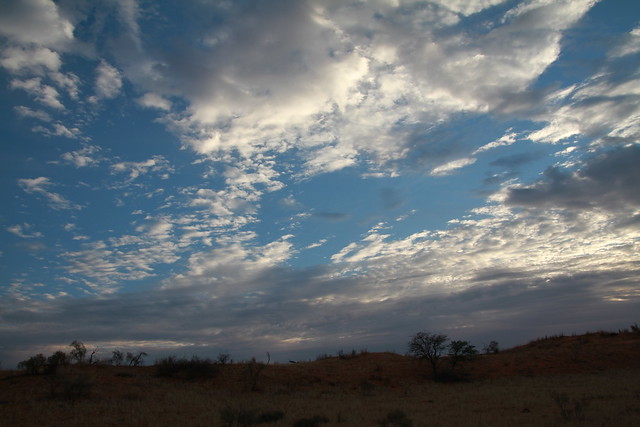
We headed back for a delicious brunch followed by cooling down in and out of the plunge pool all afternoon. Our sundowner drive was spectacular!
The vastness of the Kalahari is mesmerising…
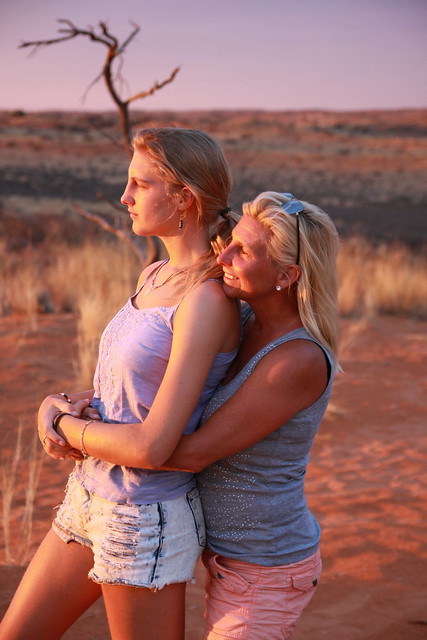
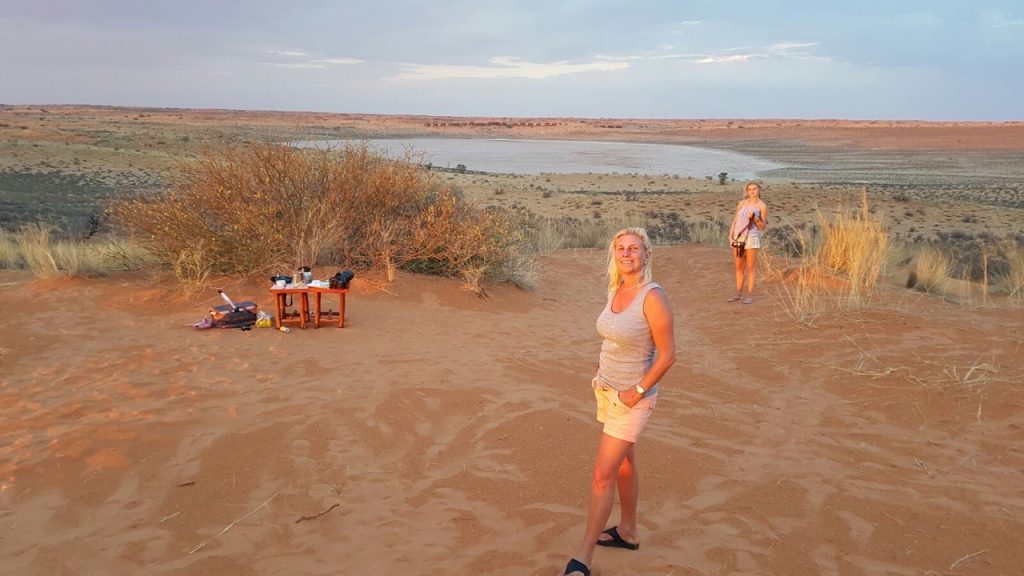
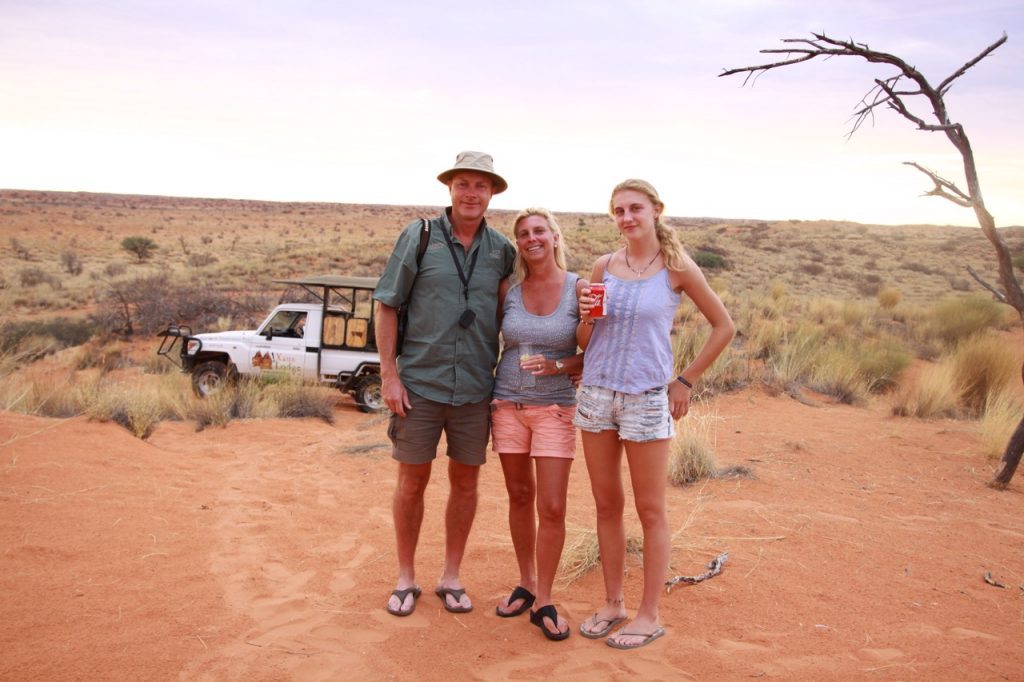
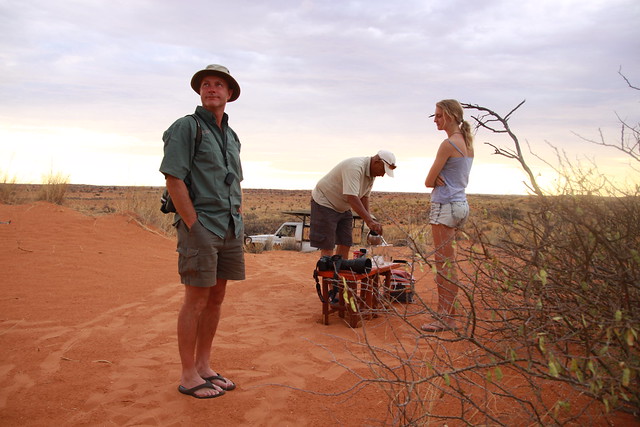
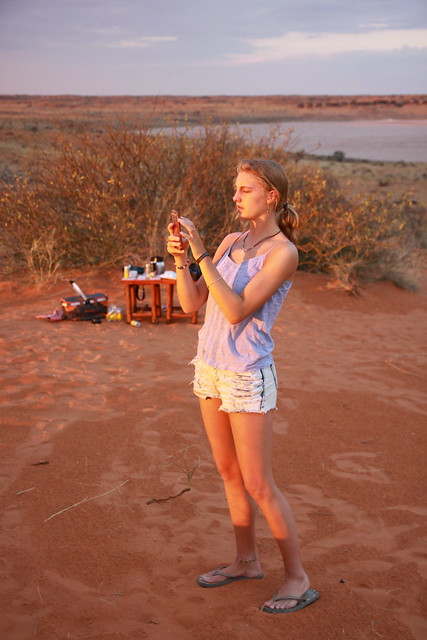

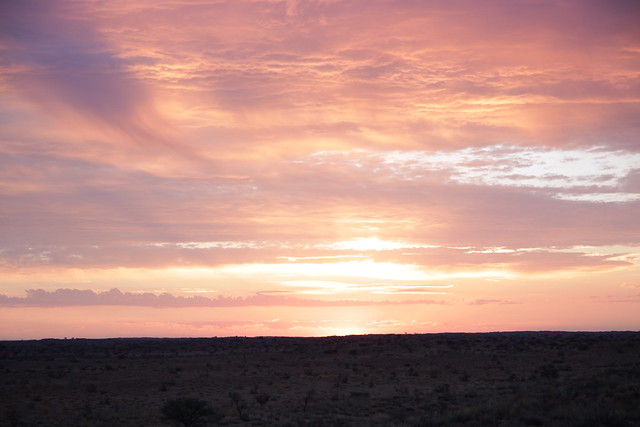
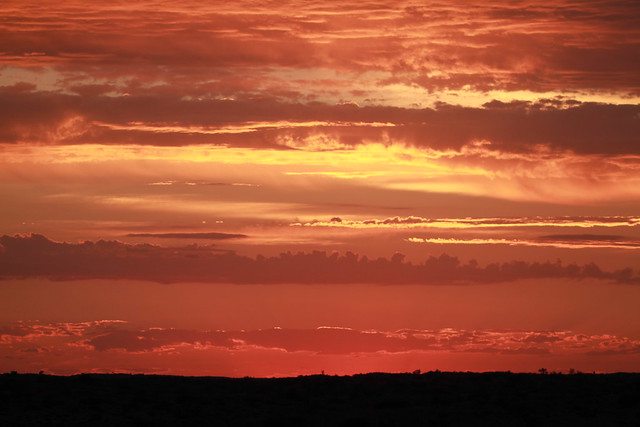

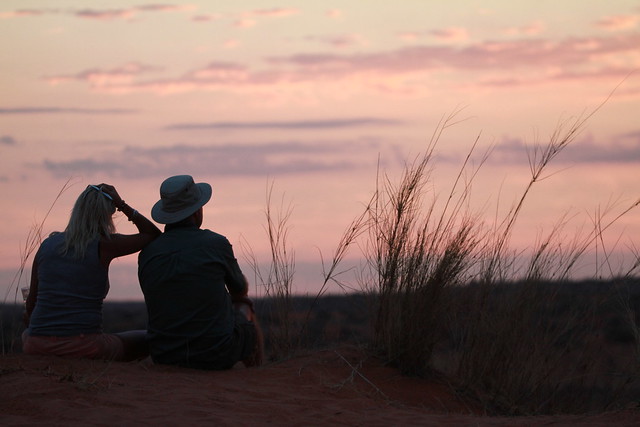
We arrived back just in time for dinner with a lovely young South Africa couple. After dinner we enjoyed a nightcap with the acting manager (the camp manager, Piet and his wife were on annual leave). We fell asleep to the sound of hyenas calling …
We were awakened by the hyenas calling at 5am – they sounded very close so we couldn’t resist going out onto our balcony to take a quick look and to take some photos:
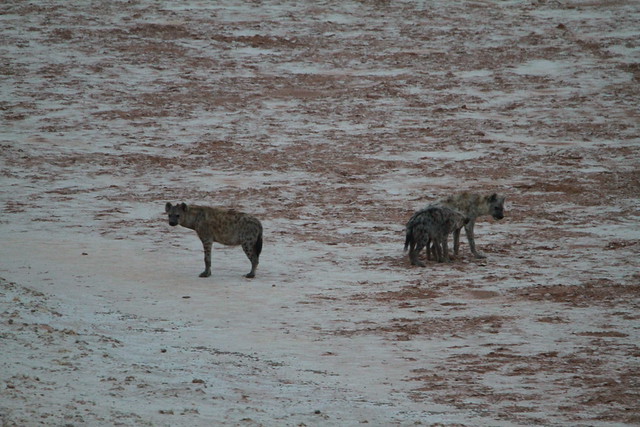
Sunrise over the pan was stunning.
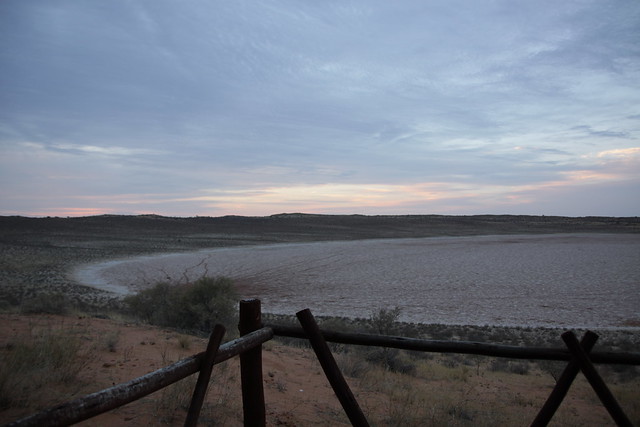
We then went back to bed for a lie in until 8am and then headed to the dining area for a delicious breakfast. We headed straight onto the road at 9am as we had a long drive ahead of us to Polentswa. We said farewell to the gemsbok at the borehole and crossed the 91 dunes uneventfully and rejoined the main road.
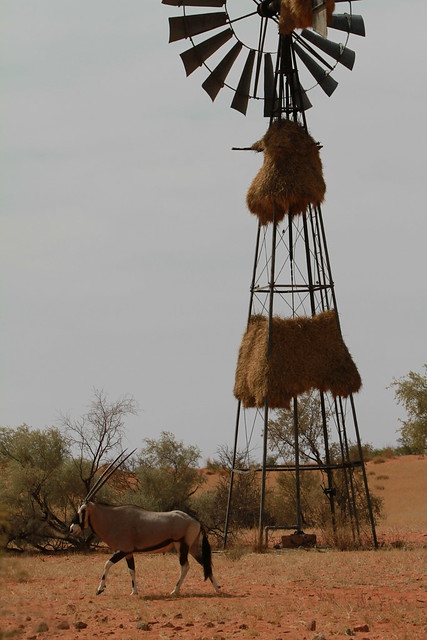
Go to: Kgalagadi 2016

